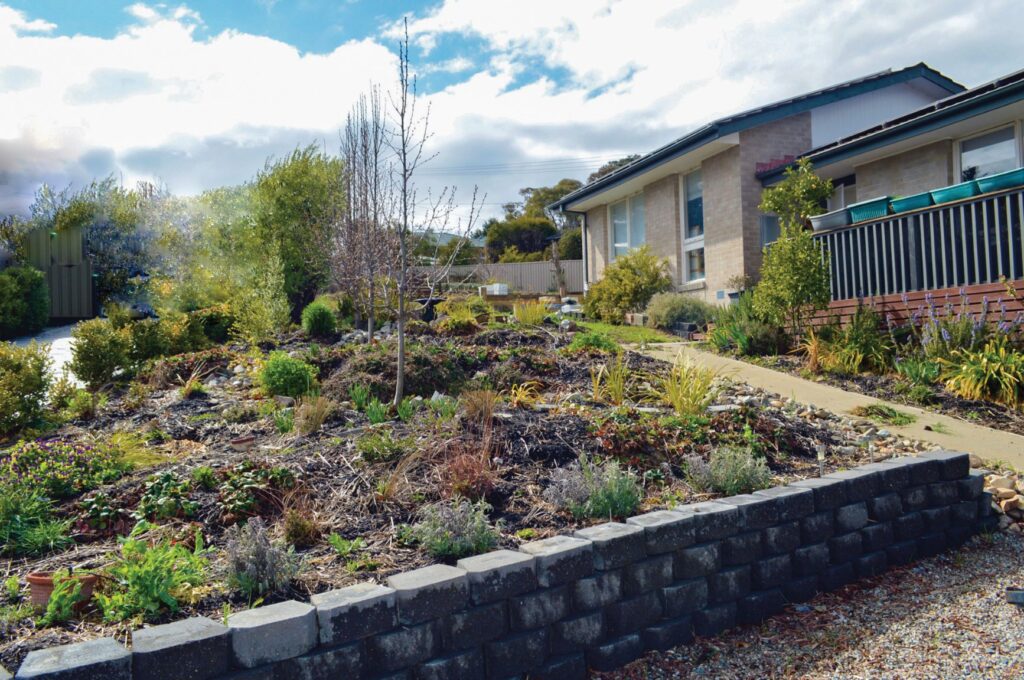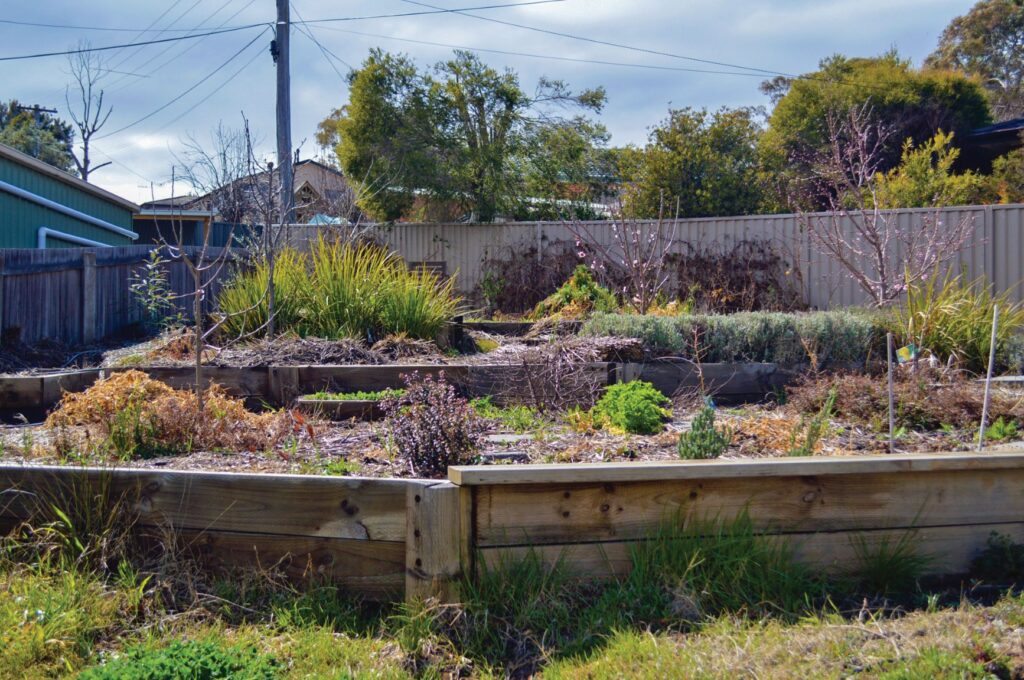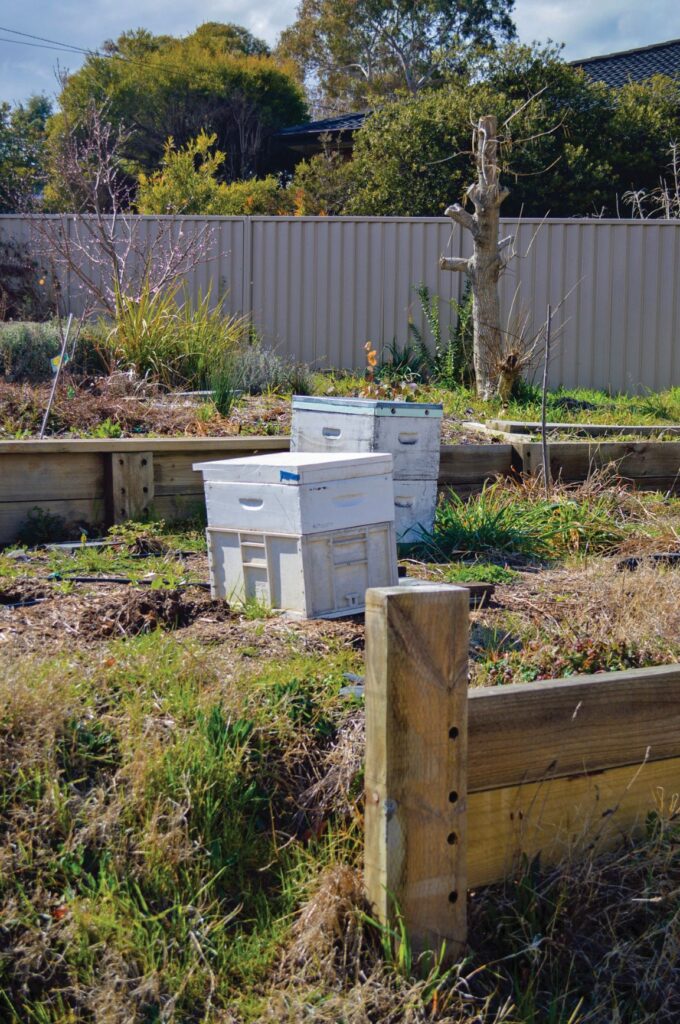Dave, Ingeborg and their three children have been living at their inspiring Canberra northside property for the past four years. The sloping block covers 1,009sqm, including a modest 100sqm of living space. The property was primarily purchased because of its large size and growing potential.

Relatively inexperienced gardeners, the family had three primary objectives for the neglected block: establish a food forest, provide habitat for local wildlife – especially birds – and create an exclusive oasis. Dave said permaculture, as well as observation of the local urban environment, was their inspiration. He went for regular walks in the botanic gardens for ideas, and the couple also accessed a range of sources, including books and online sites.
The garden is divided into three main sections: a food forest, native habitat, and a garden area at the front of the property for creating privacy. The backyard food forest has vegetable and herb patches, 12 fruiting trees and 30 metres of assorted berries (all devoured fresh each season). Agricultural pipe and coarse gravel have been installed in the terraced beds to filter runoff. Plants are irrigated with veri-flow tricklers.

The backyard is also home to five beehives, including a Kenyan top bar-style hive and four Langstroth hives. Langstroth is a traditional style of beehive which is relatively low maintenance with high harvest potential. The family harvested 25kg from two of the hives last season and are hoping to double their harvest next season. Honey is not harvested from the top bar hive, which is strictly for interest and pollination.

The family were recipients of the H2OK Demonstration Sites Grants Program, which they utilised in their front yard to create a serene pond and dry creek bed. Originally the property was poorly drained and there were significant issues with runoff. The system ensures maximum moisture is retained on the property and any runoff is well filtered and free of sediment. Primary runoff feeds into the pond, which is lined with pond liner and has reinforcing towards the top for safety. Overflow then proceeds to the dry creek bed, which has a geo-textile base covered in large pebbles. Finally, any residual water which makes it to the stormwater drain is filtered through a 10cm deep gravel bed, complete with plastic grid erosion control. A gutter diversion system collects runoff from 25% of the roof space and feeds into the pond area. Not only has the pond area all but eliminated water runoff, it has significantly increased wildlife visiting the garden.
The native garden, which is in close vicinity to the pond area, has several swales built into it to passively collect and absorb any rainfall received. The garden is watered with a dripper system, as well as from a gutter diversion system coming from the garage. All garden beds are mulched with deep layers of pea straw, which does a fabulous job of suppressing weeds and feeding the soil.
For more information about H2OK Demonstration Sites Grants Program, visit act.gov.au/h2ok
For more:



